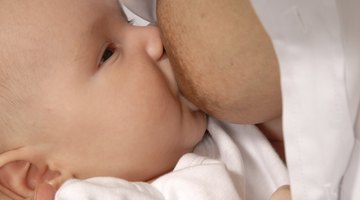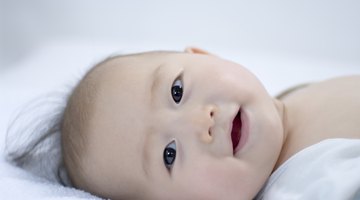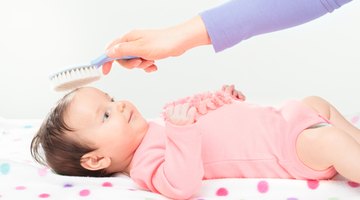Little Red Bumps on My Baby's Face
A baby’s complexion can have as many ups and downs as a teenager’s.
For new parents, the eruption of little red bumps on the smooth, soft face of their baby is an alarming turn of events and a call for immediate action. Before you schedule an appointment with the dermatologist, take a deep breath and a measure of comfort in knowing that these unsightly blemishes are probably not serious and are likely to clear up on their own.
Baby Skin Basics
During the last trimester of pregnancy, your baby's skin is covered with a creamy, white coating called vernix. This substance protects the baby's skin and helps prevent infections while in the womb and after delivery. While some of it was washed off after birth, remnants will continue to peel away in the first weeks of life. Resist the urge to help it along; a baby’s skin is delicate and that means that less is more when it comes to care.
Excessive washing will remove the baby's natural oils and make her skin more susceptible to irritation.
Applying creams and lotions may cause a problem where none exists. This can contribute to, or worsen, breakouts on the face.
Pustule Problems

Red Bumps Under an Infant's Chin
Learn More
In the days following your baby’s birth, an eruption of pustules surrounded by red blotches may appear on the face as well as the tummy, back and extremities. Erythema toxicum neonatorum affects 30 to 70 percent of infants, making it the most common of baby skin breakouts, though the cause is unknown. If you have a dog or cat, you might confuse these lesions for flea bites at first. For a definitive diagnosis, a trip to the pediatrician is in order. Despite the long, intimidating name, this condition is benign and should fade away on its own in a week or two.
Baby Bumps
Patches of red, pimple-like lesions on an infant’s face may be a case of neonatal acne.
Up to 20 percent of all infants will have their complexions temporarily marred by this malady, thought to be a response by the oil glands to maternal or infant hormones. Take a cue from your baby and shrug it off; never attempt to pick at the lesions, as this could lead to skin infection. In two to four months, your baby’s hormones will settle down, his skin will clear up and he’ll be ready for his first professional close-up with the photographer.
Scaly Skin

What Causes Pimples on a Baby's Ears?
Learn More
Though it occurs primarily on the scalp, cradle cap -- known clinically as seborrheic dermatitis -- can also afflict a baby's face and neck. It manifests as scaly, red patches with small bumps that may be itchy. While yeast and hormones have been implicated as possible contributors, the cause of this skin condition is unknown. Because it tends to disappear and not return in most children, a wait-and-watch approach is recommended. If seborrheic dermatitis persists or recurs, your pediatrician may implement topical treatments to address the itchiness and clear the skin.
Red Alert
Though the immature structure of infant skin means harmless blemishes are largely a given, some dermatological conditions warrant serious treatment. Lesions and rashes caused by yeast, staph infections, psoriasis and herpes simplex will require special care from you and your doctor. Some viral infections can also cause a red, bumpy rash on the face and other areas of the body. For this reason, consult a pediatrician about any bumps, patches or redness on your baby's face and body.
Seek medical care if the rash is accompanied by fever, is oozing or is blistering.
A baby who seems uncomfortable or is refusing feedings also should see a doctor. While your baby's breakout is likely just a fleeting, cosmetically unpleasant episode that poses no harm, it's always prudent to get a doctor's reassurance.











